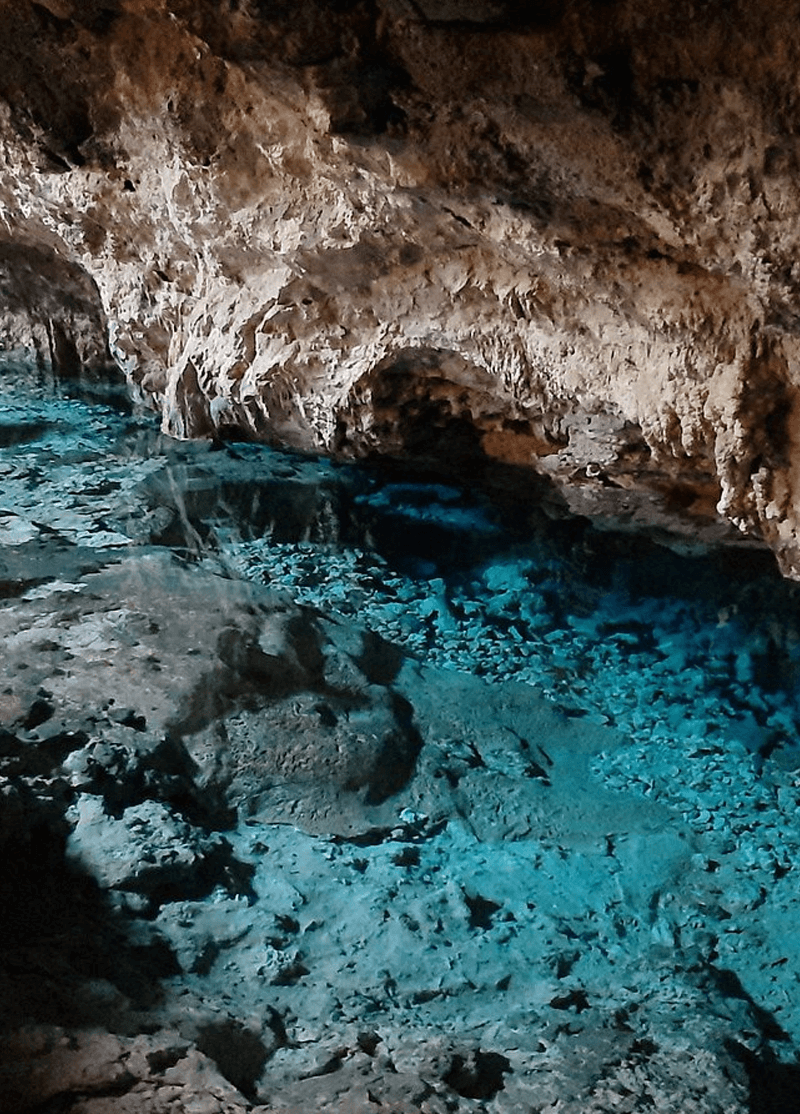Kuza Cave
Nature lovers, snorkelers, divers, and people interested in Swahili culture should all add a visit to Kuza Cave in Jambiani, East Coast Zanzibar, to their bucket list. This unique cave sinkhole is surrounded by a small jungle and offers an amazing adventure.
The circular shape of the cave is 500 meters round and was formed over 250,000 years ago from rainwater eroding limestone. As you cross the small bridge, you will be welcomed by stairs that lead into this underground oasis. Make sure to bring your camera too because there are excellent opportunities for photography!
At the base of the cave, you will discover a crystal clear pool made from seepage from underground water tables and subterranean rivers. The fresh (sweet) water is cold but refreshing! Every few days, locals use this area as an altar to make offerings to the spirits that live in the cave and request their support.
Aside from humans, Kuza Cave also attracts lots of wildlife, such as red colobus monkeys, vervet monkeys, and sky monkeys that can often be seen visiting the cave. It’s worth it for nature lovers too!
Ancient Sacred Caves of Jambiani
The ancient limestone caves of Jambiani are a hidden and mysterious gem worth exploring; they hide numerous wonders just waiting to be discovered. It is believed that the cave system was formed about 250,000 years ago by thousands of years of water erosion. This created the perfect environment for humans and animals to access fresh drinking water. Evidence suggests that this Island was connected to mainland Tanzania at that time, making it even easier for people to access these sacred caves.
Kuumbi cave, in South Jambiani, shows evidence of human habitation over 20,000 years ago. The excavation site has revealed artifacts like ancient bones – including those from large animals such as zebras, giraffes, and waterbucks – which have sharp marks left behind by human tools. Massive collections of snails further indicate complex trading networks which would come together to trade goods or find mates. Finally, there is an incredible natural sculpture known as the Elephant Alter: frozen in time like a woolly mammoth!
Exploring these ancient sacred caves is an experience not to be missed! So if you’re looking for an adventure beyond the ordinary and have a hint of excitement in your soul, then make sure you don’t pass up the opportunity to visit Kuza Cave Culture Centre and discover what lies within its depths!
Kuza Cave – Entrance Fee
Visiting Kuza Cave promises a journey back in time through East African history and a chance to explore the sacred cave of Kibigija Village. The entrance fee for Kuza Cave is just $10, so it’s an affordable and fascinating outing that won’t break your budget.
When you arrive at the entranceway, you’ll find a few steps leading to a platform with a beautiful natural sculpture like an altar. The cave itself is not dark or hard to access; guests are invited to swim in the healing waters, see artifacts from the cave, and enjoy detailed timelines of Swahili history.
The project around Kuza Cave is managed in partnership with a social enterprise dedicated to local education projects. So by visiting the cave, you will be helping support local educational initiatives and having an unforgettable experience!

